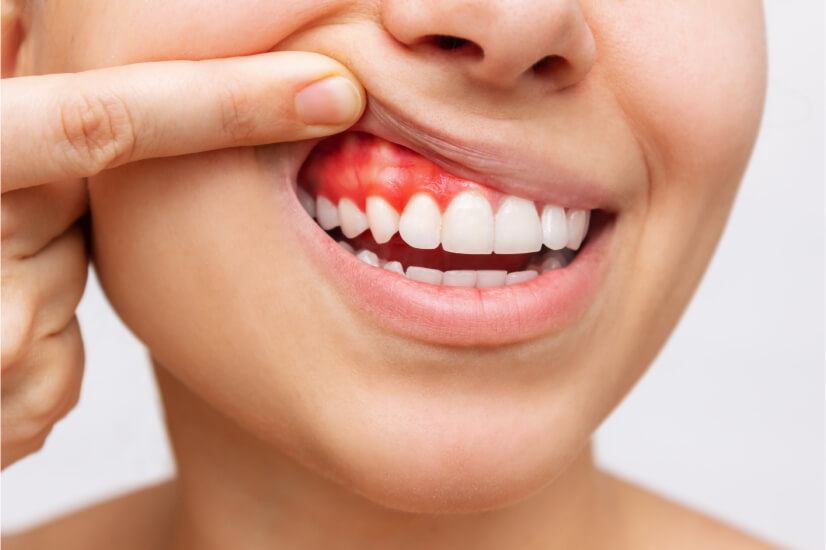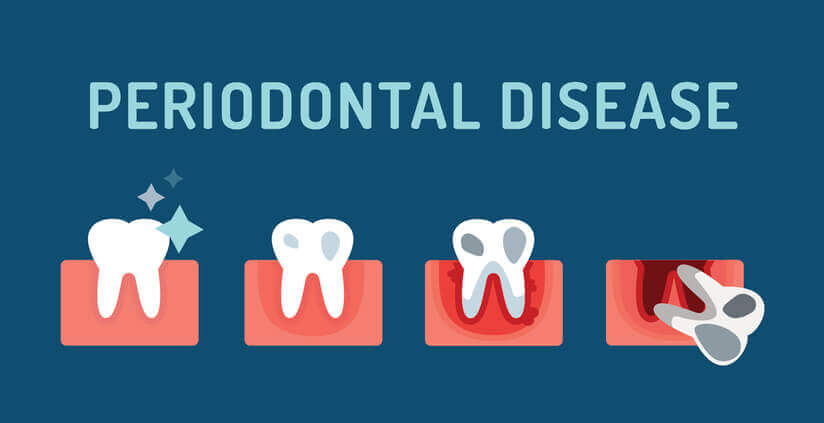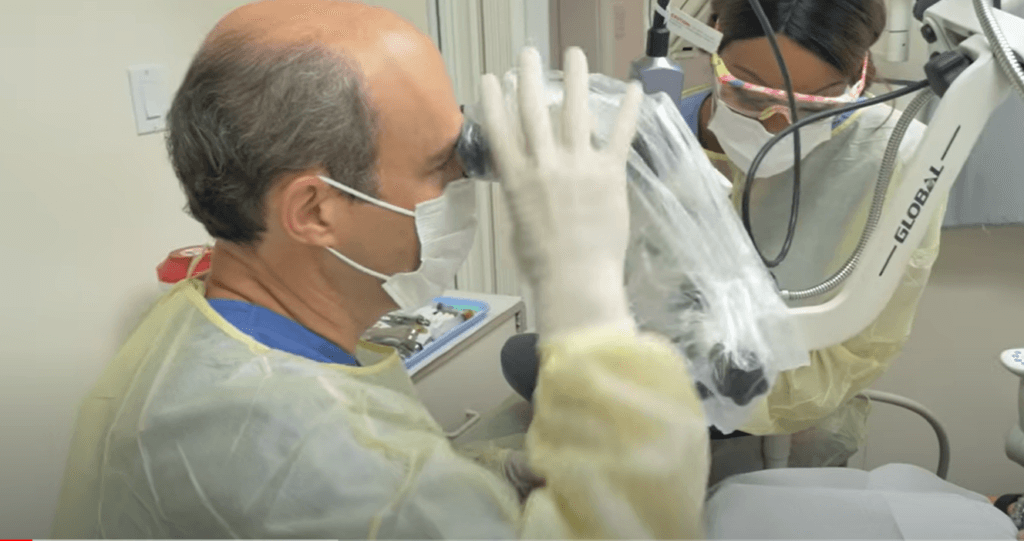Many people use the terms “gum disease” and “gingivitis” interchangeably. However, there’s a crucial distinction between the two. Gingivitis is the initial, reversible stage of gum disease. Left untreated, gingivitis can progress into more severe forms of gum disease, leading to bone loss and potential tooth loss. Dr Kissel, a leading New York City periodontist near you, explores the differences between gingivitis and periodontitis, shedding light on their causes, symptoms, and treatment options.
Understanding Gingivitis
Gingivitis is an inflammation of the gums caused by plaque buildup. Plaque is a sticky film teeming with bacteria that forms on your teeth if you don’t brush and floss regularly. The bacteria in plaque irritate the gums, causing them to become:
- Red and swollen
- Tender or sensitive
- Prone to bleeding when brushing or flossing

The good news is that gingivitis is entirely reversible with proper oral hygiene and professional dental cleanings. By brushing twice daily, flossing once daily, and scheduling regular dental checkups and cleanings, you can effectively eliminate plaque and keep gingivitis at bay.
The Progression of Gum Disease
If left untreated, gingivitis can advance to periodontitis. Periodontitis is a more severe gum infection that affects the tissues and bone supporting your teeth. As the disease progresses, the following symptoms may occur:
- Deep gum pockets that form between the teeth and gums, trapping bacteria
- Receding gums, exposing more of the tooth root surface
- Persistent bad breath (halitosis)
- Loose teeth
- Possible tooth loss
Periodontitis and Its Stages
Periodontitis itself progresses through various stages, each marked by worsening symptoms and increasing damage to the gum tissues and jawbone. Let’s examine each stage to understand their specific characteristics:

Early Periodontitis
This initial stage of periodontitis might not present with significant discomfort. However, you might notice deeper gum pockets (around 3-5mm) compared to healthy gums (1-3mm). Gums may also bleed more readily when brushing or flossing. Slight bone loss (around 1-2mm) might be detectable through X-rays.
Fortunately, early intervention offers a high chance of reversing the damage. Professional dental cleanings (scaling and root planing) to remove plaque and tartar buildup are usually the first line of defence. Additionally, Dr Kissel will emphasize meticulous oral hygiene practices at home, including proper brushing and flossing techniques, to prevent further plaque accumulation.
Moderate Periodontitis
As the disease progresses, symptoms become more pronounced. You may experience persistent bad breath (halitosis) and increased gum recession, exposing more of the tooth root surface. Gum pockets deepen further (around 5-7mm), and teeth may feel slightly loose. Bone loss becomes more evident on X-rays, typically ranging from 3-5mm.
In addition to professional cleanings, Dr Kissel might recommend scaling and root planing with antibiotic therapy to control the bacterial infection. Depending on the specific situation, he may also suggest:
- Dental flap surgery: This minimally invasive surgical procedure allows for better access to deep gum pockets for thorough cleaning and removal of infected tissue.
- Bone grafting: In cases where bone loss is significant, bone grafting procedures can promote bone regeneration and provide better support for the teeth.
Advanced Periodontitis
This severe stage of gum disease comes with noticeable discomfort and potential aesthetic concerns. Deep gum pockets (over 7mm) harbor significant bacterial infection. Extensive bone loss (over 5mm) can significantly loosen teeth, and some teeth might already be lost.
At this advanced stage, saving teeth becomes the primary focus. Dr Kissel will create a personalized treatment plan that might involve a combination of the following:
- Aggressive periodontal therapy: This involves multiple deep cleanings and possibly additional surgical procedures to remove infected tissue and promote healing.
- Oral medication: Depending on the severity of the infection, Dr Kissel might prescribe antibiotics to control bacterial growth.
- Splinting: In cases of severe tooth mobility, splinting procedures can help stabilize loose teeth and improve their function.
- Dental implants: In situations where teeth are lost due to advanced bone loss, dental implants can offer a strong and natural-looking replacement solution.
Treating Gum Disease and Gingivitis
The appropriate treatment for gum disease depends on its severity. In the early stages of gingivitis and mild periodontitis, professional dental cleanings (scaling and root planing) along with improved oral hygiene practices are usually sufficient.
Dr Kissel’s Expertise in Advanced Gum Disease Treatment
When it comes to treating advanced cases of periodontitis, Dr Kissel utilizes his expertise in dental microsurgery and minimally invasive techniques to offer patients the best possible outcomes. Here’s a closer look at the treatment options he provides:
Dental Microsurgery with Advanced Magnification
Conventional gum surgery often relies on tactile sensation for navigating the delicate gum tissues and bone structures. This can lead to limitations in precision, potentially affecting healthy tissue during the procedure.

Dr Kissel, however, utilizes high-powered surgical microscopes that provide exceptional magnification. He is able to see up to 26 times more than he can with his eyes. This allows him to visualize the treatment area in exceptional detail, enabling:
- Precise Removal of Diseased Tissue: The magnified view allows Dr Kissel to meticulously target and remove only the infected gum tissue, minimizing damage to healthy surrounding structures. This promotes faster healing and reduces post-operative discomfort.
- Enhanced Bone Regeneration Techniques: Microscopic visualization facilitates the use of advanced bone grafting materials and techniques. This promotes targeted bone regeneration around teeth, providing better support and stability.
- Improved Nerve Preservation: The magnified view also allows Dr Kissel to identify and preserve delicate nerves during surgery, minimizing the risk of numbness or tingling after the procedure.
LANAP Laser Therapy: Minimally Invasive Treatment with Faster Healing
LANAP is a minimally invasive laser treatment specifically designed for gum disease. It utilizes a precisely controlled laser beam to target and remove infected gum tissue. It offers several advantages over traditional gum surgery:
- Minimally Invasive: Unlike traditional methods that involve scalpels and sutures, LANAP uses a targeted laser, eliminating the need for extensive cuts and stitches. This translates to less bleeding, swelling, and discomfort after the procedure.
- Reduced Risk of Infection: The laser beam has a disinfectant effect, minimizing the risk of bacterial infection during and after treatment.
- Faster Healing: LANAP promotes faster healing of the gum tissues compared to traditional surgery. This means a quicker recovery time and a return to your normal activities sooner.
- Preserving Healthy Tissue: The laser’s precision allows Dr. Kissel to target only diseased tissue, leaving healthy gum tissue unharmed. This promotes better long-term gum health.
Overall, Dr Kissel’s personalized approach combines advanced technology with his surgical expertise to provide patients with the most effective and comfortable treatment for advanced gum disease.
The Profound Benefits of Early Intervention: Why Catching Gum Disease Early Matters
Early detection and intervention are the cornerstones of successful gum disease management. By addressing gum disease in its early stages, specifically gingivitis, you gain a multitude of benefits that contribute to your overall oral and systemic health. Here’s why taking action early is crucial:
Preserves Your Smile
Gingivitis is entirely reversible with proper oral hygiene and professional cleanings. Early intervention prevents the progression to periodontitis, which can lead to tooth loss and a compromised smile.
Maintains Optimal Oral Health
Healthy gums play a vital role in supporting your teeth and preventing infection. Addressing gingivitis early safeguards your oral health and prevents the need for more complex and expensive periodontal treatments down the line.
Reduces Pain and Discomfort
Gingivitis, in its early stages, may not cause significant discomfort. However, as periodontitis progresses, it can lead to pain, sensitivity, and even abscesses (infected pus pockets) around teeth. Early intervention helps you avoid this discomfort and maintain a healthy, pain-free mouth.
Improves Overall Health
Research suggests a link between gum disease and various systemic health conditions, including heart disease, diabetes, and even stroke. By controlling gum disease early on, you potentially reduce the risk of developing these serious health complications.
Saves Money
Early treatment of gingivitis usually involves routine dental cleanings, which are significantly less expensive than the advanced procedures required for treating moderate or advanced periodontitis. Additionally, early intervention helps prevent tooth loss, which can necessitate costly dental implants or bridges.
Boosts Self-Confidence
A healthy smile is a significant contributor to self-confidence. Gum disease, especially in its advanced stages, can lead to receding gums, exposed tooth roots, and potential tooth loss, impacting your smile’s aesthetics. Early treatment helps you maintain a healthy, attractive smile, boosting your confidence and overall well-being.
In general, taking a proactive approach to your oral health allows Dr Kissel to identify and address gum disease in its earliest stages. This sets the stage for optimal oral health, a beautiful smile, and potentially reduces the risk of developing other health complications. Remember, prevention is always better than cure.
Looking for a Periodontist Near Me? Book Your Consultation with Dr Kissel Today!
Don’t wait until your gums show severe signs of trouble. Consulting with an NYC board-certified periodontist, like Dr Kissel who is always up-to-date with new treatments and procedures, you will receive periodontal care that is backed by current research. If you have periodontal issues, contact him to book your consultation. With advanced training in periodontitis / gum disease, laser surgery, and microscopic procedures, he can offer you minimally invasive techniques that provide better precision, comfort, and results. He also provides a variety of amenities and resources to make your experience in his periodontal office more comfortable and relaxing. Call his Madison Avenue periodontal office in New York City for a consultation at (347) 758-9790.
